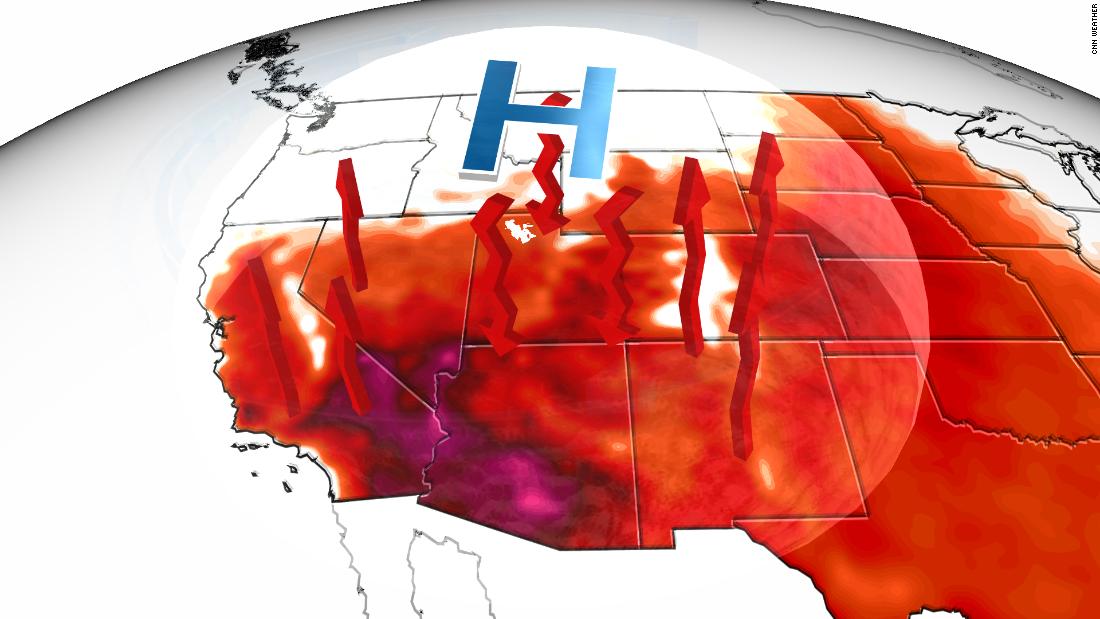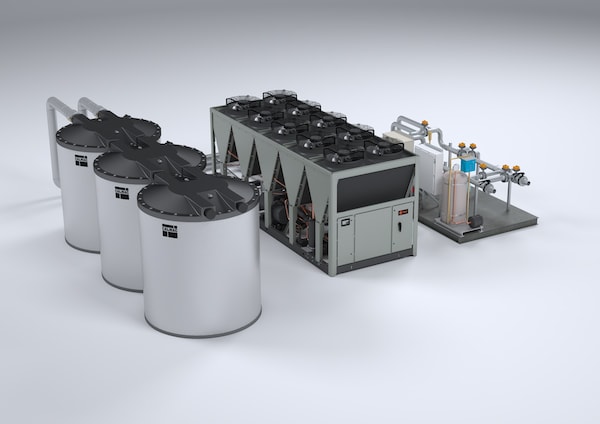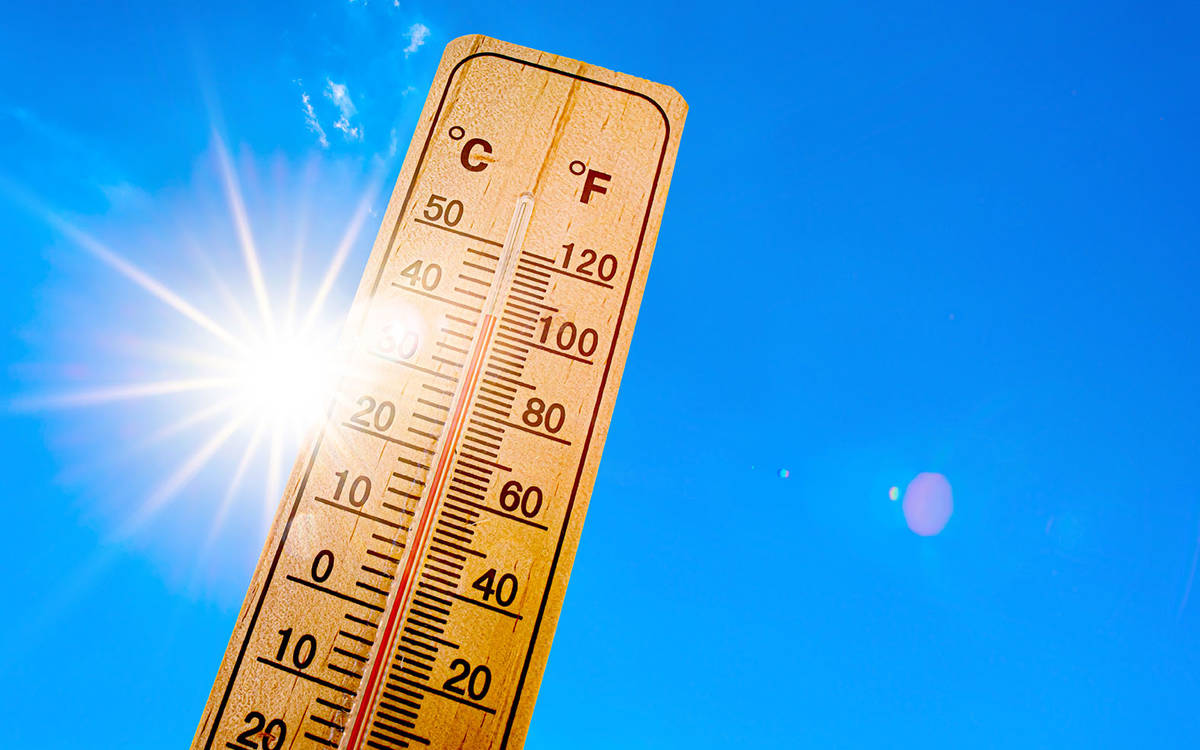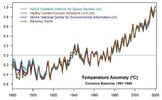This is the EVIDENCE that the Climate Change issue Is REALLY DANGEROUS!CNN : An eighth of the US population is sweltering under a record-breaking heat dome. Climate change is making it worse.

An eighth of the US population is sweltering under a record-breaking heat dome. Climate change is making it worse
A potentially lethal heat wave is affecting more than 40 million people in the US this week.rss.cnn.com
Welcome to Tesla Motors Club
Discuss Tesla's Model S, Model 3, Model X, Model Y, Cybertruck, Roadster and More.
Register
Install the app
How to install the app on iOS
You can install our site as a web app on your iOS device by utilizing the Add to Home Screen feature in Safari. Please see this thread for more details on this.
Note: This feature may not be available in some browsers.
-
Want to remove ads? Register an account and login to see fewer ads, and become a Supporting Member to remove almost all ads.
You are using an out of date browser. It may not display this or other websites correctly.
You should upgrade or use an alternative browser.
You should upgrade or use an alternative browser.
Climate Change / Global Warming Discussion
- Thread starter Raffy.Roma
- Start date
-
- Tags
- Energy Environment Policy
mspohr
Well-Known Member
What tree rings reveal about America’s megadrought – a visual guide
. But here's the astounding part: Williams and his team also estimated what drought conditions would look like if human activities had not caused global warming ... ... and they found that we would still likely be living through a once-in-a-century drought – but human activity accounts for about 46% of the severity of the current megadrought. And if it continues to be this dry, it could become the most severe megadrought on this entire chart. "The only reason this drought is lagging behind that 1500s drought is because it's so young," Williams said. Tree ring images courtesy of Daniel Griffin, dendrochronologist at the University of Minnesota
. But here's the astounding part: Williams and his team also estimated what drought conditions would look like if human activities had not caused global warming ... ... and they found that we would still likely be living through a once-in-a-century drought – but human activity accounts for about 46% of the severity of the current megadrought. And if it continues to be this dry, it could become the most severe megadrought on this entire chart. "The only reason this drought is lagging behind that 1500s drought is because it's so young," Williams said. Tree ring images courtesy of Daniel Griffin, dendrochronologist at the University of Minnesota
Strange this is not getting more PR in hot regions. Oversize daytime solar to cool building plus store cooling in water tanks. Release cooling in the evening and night. I would imagine this being much cheaper than grid batteries.

Update:
Oh, there was a company called Ice Energy trying to do this for residential applications, seems to have gone out of business. Weird. But for condo and apartments, the commercial Trane units should be doable.

Thermal Battery Systems
Trane Thermal Battery™ systems are premier HVAC plants that provide a distributed resource for our changing grid. Their ability to store thermal energy enables your building to reliably modify HVAC operations to optimize for carbon reduction or energy cost savings.
www.trane.com
Update:
Oh, there was a company called Ice Energy trying to do this for residential applications, seems to have gone out of business. Weird. But for condo and apartments, the commercial Trane units should be doable.
Last edited:
You can also use thermal batteries in conjunction with solar collectors instead of PV, which I believe makes them more efficient. Of course, in that case you're using them directly for heat. I recall reading where some locations even use thermal batteries to cool water overnight, and provide some level of cooling or at least a more efficient heat sink for a heat pump during the day.Strange this is not getting more PR in hot regions. Oversize daytime solar to cool building plus store cooling in water tanks. Release cooling in the evening and night. I would imagine this being much cheaper than grid batteries.

Thermal Battery Systems
Trane Thermal Battery™ systems are premier HVAC plants that provide a distributed resource for our changing grid. Their ability to store thermal energy enables your building to reliably modify HVAC operations to optimize for carbon reduction or energy cost savings.www.trane.com
Update:
Oh, there was a company called Ice Energy trying to do this for residential applications, seems to have gone out of business. Weird. But for condo and apartments, the commercial Trane units should be doable.
You can also use thermal batteries in conjunction with solar collectors instead of PV, which I believe makes them more efficient. Of course, in that case you're using them directly for heat. I recall reading where some locations even use thermal batteries to cool water overnight, and provide some level of cooling or at least a more efficient heat sink for a heat pump during the day.
Yep, the HVAC efficiency is much higher when ran in low ambient temps. When it's over 110F outside, not so much. I let the house go up to 80F at night and set it to cool to 72F at 6am.
Another option is to make the foundation thicker and insulated - it becomes the heat sink! One option that is cheap to implement before building but very expensive after the structure is built.
Well, not sure how cost effective this is (probably not), but there are 4 versions you can choose from... "Templok PCM is available in 18ºC [65ºF] , 22ºC [72ºF] , 25ºC [77ºF] and 27ºC [80ºF]"
Another one...
Another one...
NV is #1! Las Vegas is matching Phoenix for summer highs.

 www.reviewjournal.com
www.reviewjournal.com

Where does Nevada rank in fastest-warming states?
Every state is growing warmer, with higher temperatures fueled by everything from powerful ocean currents and giant coal-fired power plants to commuters, cows, and leaky old buildings.
mspohr
Well-Known Member

Legal experts worldwide draw up ‘historic’ definition of ecocide
Draft law is intended to prosecute offences against the environment
mspohr
Well-Known Member
The climate crisis is a crime that should be prosecuted | Mark Hertsgaard
This crime threatens today’s young people most of all and calls into question the very survival of civilization. And yet, the criminals responsible for this devastation are still at large. Indeed, they continue to perpetrate their crime, and even make money from it, not least because their crime remains unknown to most of the public.
This crime threatens today’s young people most of all and calls into question the very survival of civilization. And yet, the criminals responsible for this devastation are still at large. Indeed, they continue to perpetrate their crime, and even make money from it, not least because their crime remains unknown to most of the public.
Norbert
TSLA will win
Greta Thunberg 7min speech adressing the Austrian World Summit
"Let’s be clear — what you are doing is not about climate action or responding to an emergency. It never was. This is communication tactics disguised as politics."
jimm01
Member
Attachments
mspohr
Well-Known Member
‘We thought it wouldn’t affect us’: heatwave forces climate reckoning in Pacific north-west
The record heatwave in the Pacific north-west is forcing a reckoning on the climate crisis, as many living in the typically mild region consider what rising temperatures mean for the future. A “heat dome” without parallel trapped hot air over much of the states of Oregon and Washington in the United States, and southern British Columbia in Canada, in past days, shattering weather records in the usually temperate region.The record heatwave in the Pacific north-west is forcing a reckoning on the climate crisis, as many living in the typically mild region consider what rising temperatures mean for the future. A “heat dome” without parallel trapped hot air over much of the states of Oregon and Washington in the United States, and southern British Columbia in Canada, in past days, shattering weather records in the usually temperate region.
On Thursday, the Washington state senator Rebecca Saldaña, whose support proved crucial to passage of the cap-and-trade plan earlier in the year, said the heatwave demonstrated the need for climate action, particularly for people already living with pollution. Saldaña believes a new racially aware anti-pollution effort in Washington may prove consequential.
The record heatwave in the Pacific north-west is forcing a reckoning on the climate crisis, as many living in the typically mild region consider what rising temperatures mean for the future. A “heat dome” without parallel trapped hot air over much of the states of Oregon and Washington in the United States, and southern British Columbia in Canada, in past days, shattering weather records in the usually temperate region.The record heatwave in the Pacific north-west is forcing a reckoning on the climate crisis, as many living in the typically mild region consider what rising temperatures mean for the future. A “heat dome” without parallel trapped hot air over much of the states of Oregon and Washington in the United States, and southern British Columbia in Canada, in past days, shattering weather records in the usually temperate region.
On Thursday, the Washington state senator Rebecca Saldaña, whose support proved crucial to passage of the cap-and-trade plan earlier in the year, said the heatwave demonstrated the need for climate action, particularly for people already living with pollution. Saldaña believes a new racially aware anti-pollution effort in Washington may prove consequential.
mspohr
Well-Known Member
The New York Times: What Technology Could Reduce Heat Deaths? Trees.. What Technology Could Reduce Heat Deaths? Trees.
Here’s why: At a time when climate change is making heat waves more frequent and more severe, trees are stationary superheroes. Research shows that heat already kills more people in the United States than hurricanes, tornadoes and other weather-events, perhaps contributing to 12,000 deaths per year. Extreme heat this week in the Pacific Northwest and Canada has killed hundreds. Here’s why: At a time when climate change is making heat waves more frequent and more severe, trees are stationary superheroes. Research shows that heat already kills more people in the United States than hurricanes, tornadoes and other weather-events, perhaps contributing to 12,000 deaths per year. Extreme heat this week in the Pacific Northwest and Canada has killed hundreds.
Trees can lower air temperature in city neighborhoods 10 lifesaving degrees, scientists have found. They also reduce electricity demand for air conditioning, not only sparing money and emissions, but helping avoid potentially catastrophic power failures during heat waves.
“Trees are, quite simply, the most effective strategy, technology, we have to guard against heat in cities,” said Brian Stone Jr., a professor of environmental planning at the Georgia Institute of Technology.
The crux of the problem, according to scientists and environmental planners, is that Americans, from everyday citizens to government officials, are often not fully aware of the benefits that trees provide. In addition to reducing heat, trees filter out air pollution, suck up storm water, store carbon, nurture wildlife and even improve people’s mental and physical health.
Here’s why: At a time when climate change is making heat waves more frequent and more severe, trees are stationary superheroes. Research shows that heat already kills more people in the United States than hurricanes, tornadoes and other weather-events, perhaps contributing to 12,000 deaths per year. Extreme heat this week in the Pacific Northwest and Canada has killed hundreds. Here’s why: At a time when climate change is making heat waves more frequent and more severe, trees are stationary superheroes. Research shows that heat already kills more people in the United States than hurricanes, tornadoes and other weather-events, perhaps contributing to 12,000 deaths per year. Extreme heat this week in the Pacific Northwest and Canada has killed hundreds.
Trees can lower air temperature in city neighborhoods 10 lifesaving degrees, scientists have found. They also reduce electricity demand for air conditioning, not only sparing money and emissions, but helping avoid potentially catastrophic power failures during heat waves.
“Trees are, quite simply, the most effective strategy, technology, we have to guard against heat in cities,” said Brian Stone Jr., a professor of environmental planning at the Georgia Institute of Technology.
The crux of the problem, according to scientists and environmental planners, is that Americans, from everyday citizens to government officials, are often not fully aware of the benefits that trees provide. In addition to reducing heat, trees filter out air pollution, suck up storm water, store carbon, nurture wildlife and even improve people’s mental and physical health.
JRP3
Hyperactive Member
My house in the woods needs very little ac because of all the trees. I might run it for a couple of hours at most on the hottest days. The pole barn garage I built a few years ago with steel siding and 2inch spray foam on the walls and 3 on the ceiling has never gone above 74F with no ac regardless of how hot it is outside. I left as many trees in place as possible when building it so it stays mostly shaded. In the winter when the leaves are gone the lower angle sun can heat the dark brown southern facing steel walls to 100F and reduce heating loads. At some point I'd like to build a solar collector to take advantage of this for extra free winter heat.Trees can lower air temperature in city neighborhoods 10 lifesaving degrees, scientists have found. They also reduce electricity demand for air conditioning, not only sparing money and emissions, but helping avoid potentially catastrophic power failures during heat waves.
cpa
Active Member
My house in the woods needs very little ac because of all the trees. I might run it for a couple of hours at most on the hottest days. The pole barn garage I built a few years ago with steel siding and 2inch spray foam on the walls and 3 on the ceiling has never gone above 74F with no ac regardless of how hot it is outside. I left as many trees in place as possible when building it so it stays mostly shaded. In the winter when the leaves are gone the lower angle sun can heat the dark brown southern facing steel walls to 100F and reduce heating loads. At some point I'd like to build a solar collector to take advantage of this for extra free winter heat.
Defining what is hot or cold weather is a matter of personal perception and personal history. I am thoroughly unfamiliar with the weather patterns and climate in Central New York.
Here is our weather in Central California, so this is what I am familiar with. From early May through mid-October (~160 days) we generally have 50 days >100 degrees. Another 60 or so are between 90 and 100, with more days approaching 100 than 90. The remaining days are ~84-89. Nighttime lows range from the high 50s at the start and end of the season, with 75-78 when the temperatures approach 110. (Supposed to hit 113 next weekend, but that of course could drop by 3-4 degrees.) Our lows for the next few days are supposed to be 65-68 with highs ~101-103. The only redeeming value with our temperatures is that the relative humidity tops out at around 35% at dawn and drops to 15% or lower by mid afternoon.
Since your latitude is much further north, and since you are not in a 450-mile x 45-mile giant bathtub, I would presume that your area does not experience "hot" weather for five months. How much area is water? Lakes can absorb a lot of heat and retain it rather than reflecting the heat back into the atmosphere in dry areas. Do you receive rainfall during the summer? Wet ground also helps mitigate the effects of heat as opposed to dry ground. Of course you likely experience high relative humidity which raises the heat index more than our 15% at 102 degrees.
Anyway, just trying to put your hot weather in perspective with other parts of the country. While I am jealous of your extensive arboreal landscaping, we have determined that our backyard with three 50-foot coastal redwoods and our three similarly-sized pin oaks on the southwestern part of our lot don't really do much to quell the intensity of the hot weather in summer. One hundred degrees in the shade means that is it likely 115 degrees in the direct sun.
(No doubt you will scoff at our horror when the temperatures drop to 34 degrees overnight in January, and we are "freezing to death!")
JRP3
Hyperactive Member
I was comparing my ac use to what is normal in the area without being in the woods. An 80+ day will normally require ac in most places where I probably don't need it at all until 85+. We rarely see 100 but 85-90 peaks in the summer are not unusual. Humidity can be high which makes the heat feel worse.
Similar threads
- Replies
- 19
- Views
- 2K
- Replies
- 48
- Views
- 4K
- Replies
- 64
- Views
- 4K
- Replies
- 54
- Views
- 35K
- Replies
- 4
- Views
- 13K




